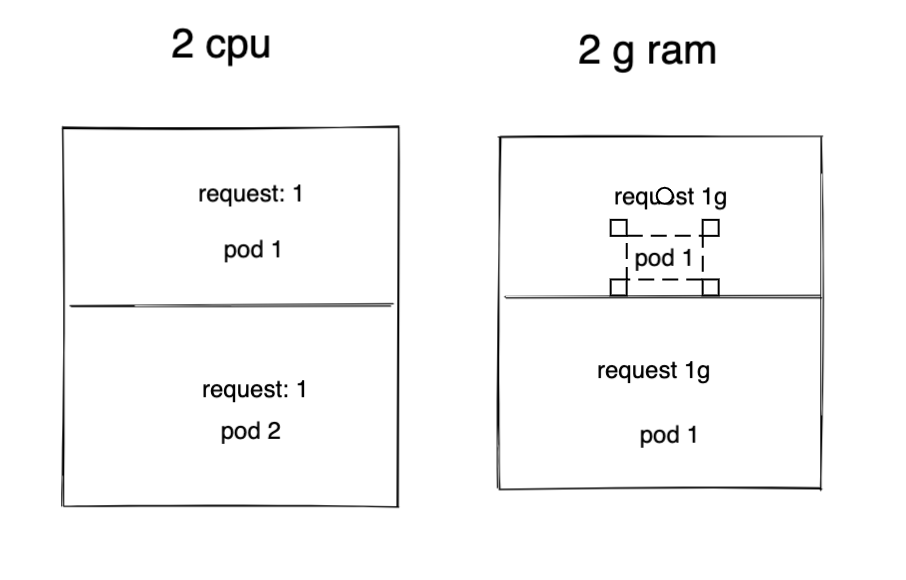kubernetes
Kubernetes vs. Docker: What Does it Really Mean?
Kubernetes 101: Pods, Nodes, Containers, and Clusters
Demystifying Kubernetes Operators with the Operator SDK: Part 1 Kubernetes Components
Kubernetes Cluster vs Master Node
Dive Deep into Resource Requests and Limits in Kubernetes
10 张图带你搞懂 Kubernetes Pod 的创建流程
what is kubernetes?

docker: create containers k8s: 管理(编排)容器:
- deploy container
- scaling up and removing containers
- monitor container
architecture
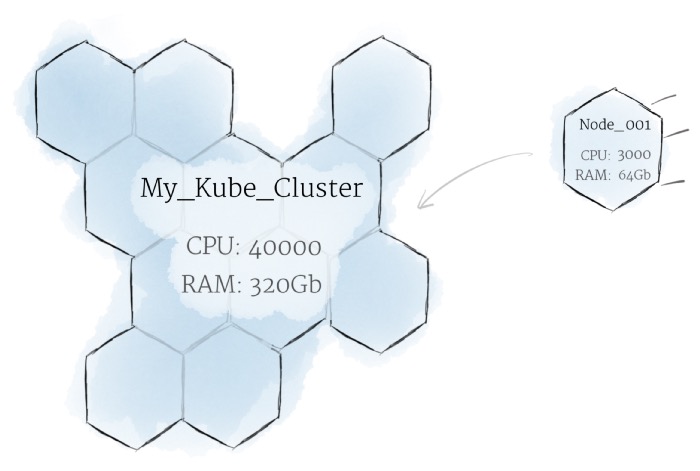
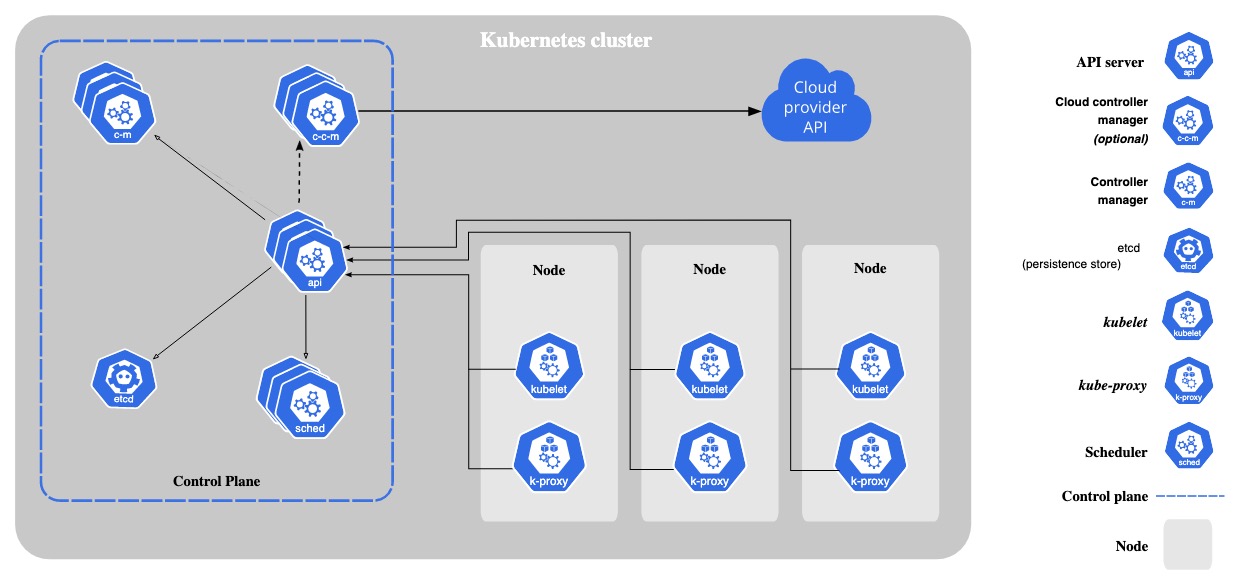

- master: manager worker
- worker: 运行container
1. master node(control plane)
- etcd: 集群数据
- kube-scheduler: 分配new pod 到node 上
- apiserver: 提供对外和对内交流的枢纽
- controller: a state machine; watch the state of your cluster, move the state to the desired state
- Node controller: Responsible for noticing and responding when nodes go down.
- Replication controller: Responsible for maintaining the correct number of pods for every replication controller object in the system.
2. Work node
-
Kubelet
- manage pods
-
kube proxy
- manage network;
-
pod: k8s编排的对象;
pod
k8s管理的基本单位; a pod is a group of container which share storage and network resoureces;
1. workload
用户部署的应用,可能有多个pod组成;
- pods
- deployment and replicaSet: 复制N份pod;; deployment–> replicaSet–> pods replicaSet—> pods
- statefulset: 有状态应用
- daemonset: 运行在每个node 上
- job: 运行N次后退出
- cornJob:定时运行
2.how to create;
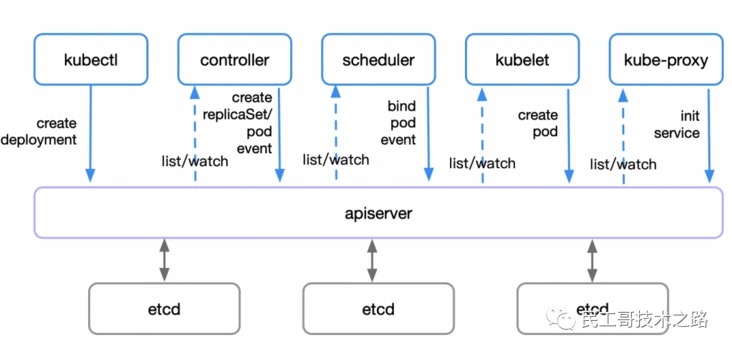
- kubuctl send command to apiserver;
- apisever save yaml to etcd;
- controller watch etcd, 生成pod配置信息, save to etcd;
- scheduler watch etcd pod配置信息,指定相关node创建pod;
- 指定node.kubelet创建pod;
2.lifeCycle
- pending: 等待被创建;
- running: pod所有容器已经被创建,至少一个容器正在运行或者正在启动
- failed:pod所有容器都终止,至少一个 是非0退出;
- unkonwon:无法获取pod状态
yaml
yaml decribe a k8s resouce state, the k8s will work constantly to ensure the state; resource type
|
|
kind
define a k8s object:
- workload
- service
- storage
metadata
help to uniquely identify the object;
1. name:
2. namespace:
3. lables: are meaningful and relevant to users, but do not directly imply semantics to the core system.
spec
spec: what state you desire for the obejct
- replicas:
- selector: select pods
- spec.template: the actual template for the container
template
resouce
|
|
memory: Mi,Gi cpu: 100m, 0.1; (0.1cpu core)
cpu compressible; ram incompressible;
-
request: used to schedule, if there are no node satisfy the resources the pod won’t be scheduled;

2 cpu cluster max request 2cpu 2g ram cluster max request 2g
-
limit: moniter the runing, if reach;
- cpu: be restricted, continue run;
- memroy: oom(out of memory) error, pod restart;
-
the used resouce exceed the node’s resouce;
- cpu:
- the pod run normaly, but the pod’s load average will increase;
- ram:
- pod will evicted from current node by a order
- request && limit = 0
- at least one container in pod have reqeust specified for cpu or memory
- every container request == limit
- pod will evicted from current node by a order
- cpu:
kubectl command
command type:
- manage resouces
- debug/inspect
1. manage resouce
delete a deployment
for controller resourxe, you should delete the controller, otherwise the pods will recreate by the controller
|
|
2. inspect/debug
- exec a command in a container
kubectl exec (POD | TYPE/NAME) [-c CONTAINER] [flags] – COMMAND [args…]
|
|
scale
cluster-autoscaler
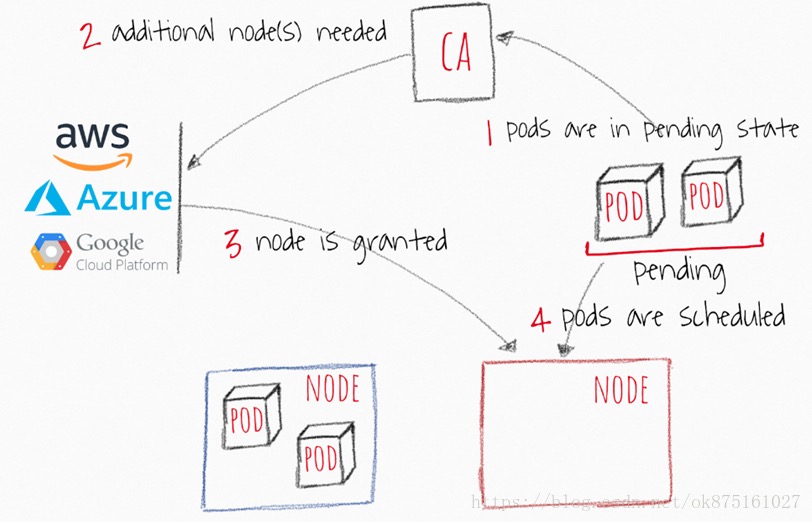
HorizontalPodAutoscaler
- monitor cpu, memory, and if need scale
|
|

